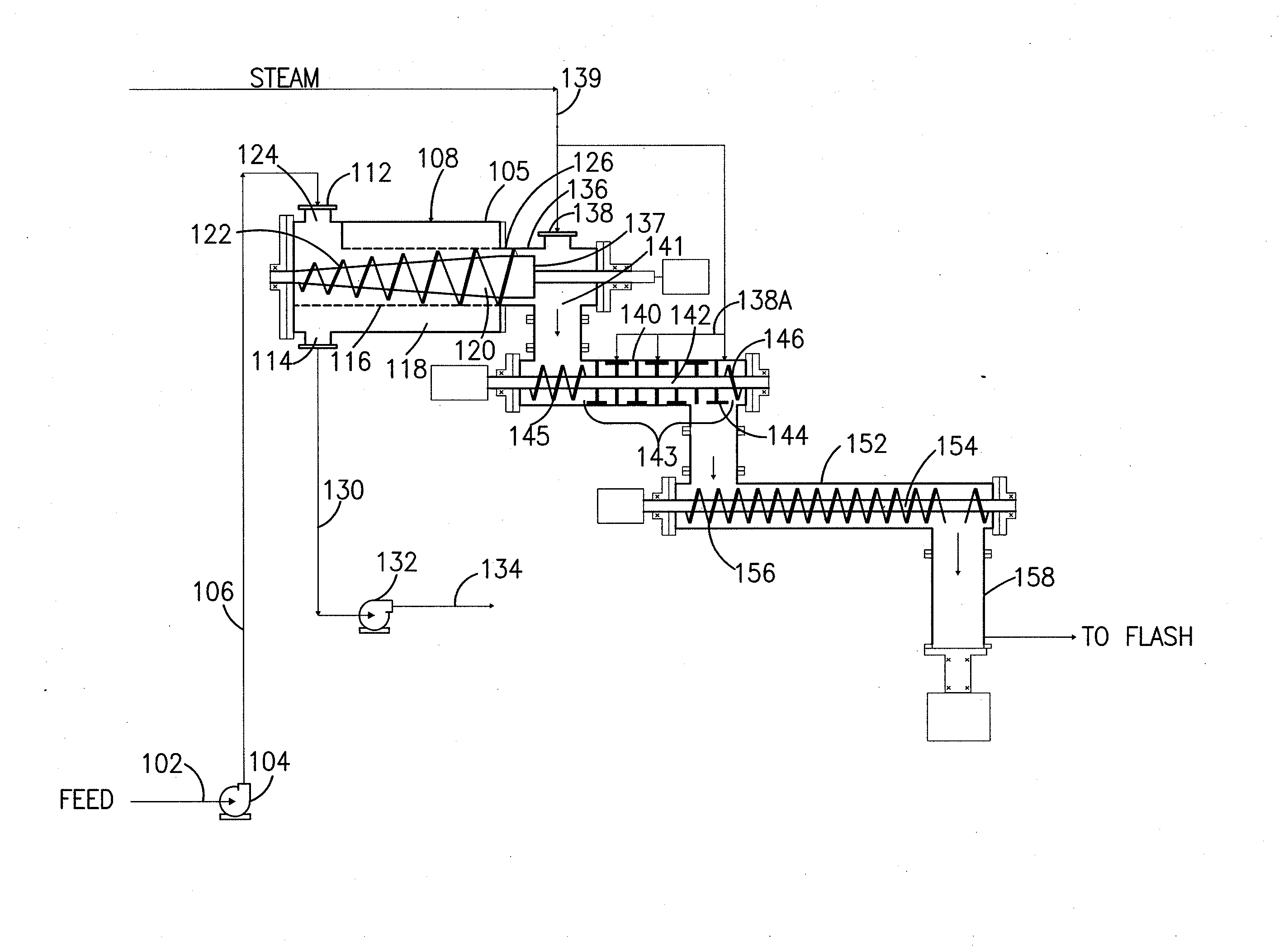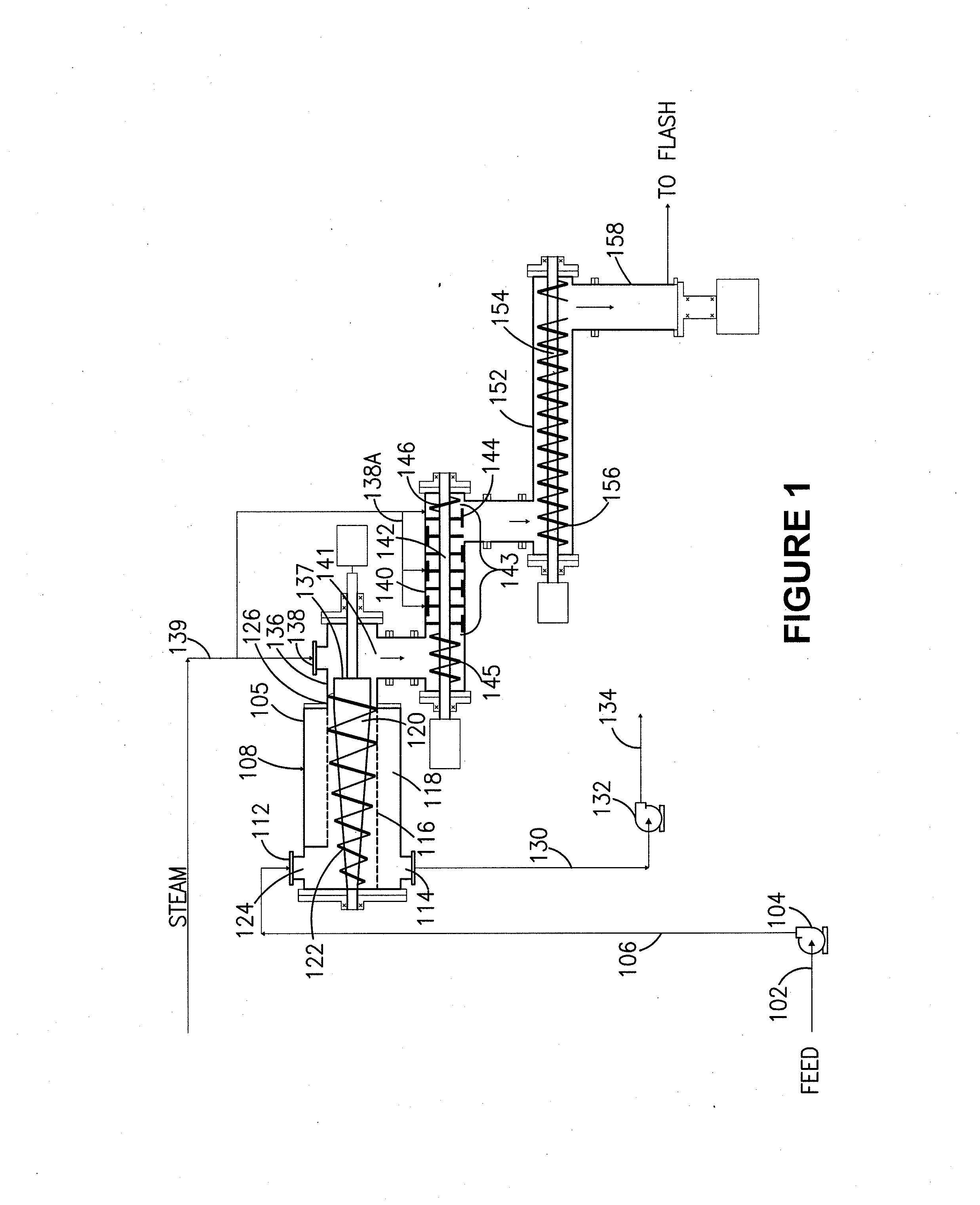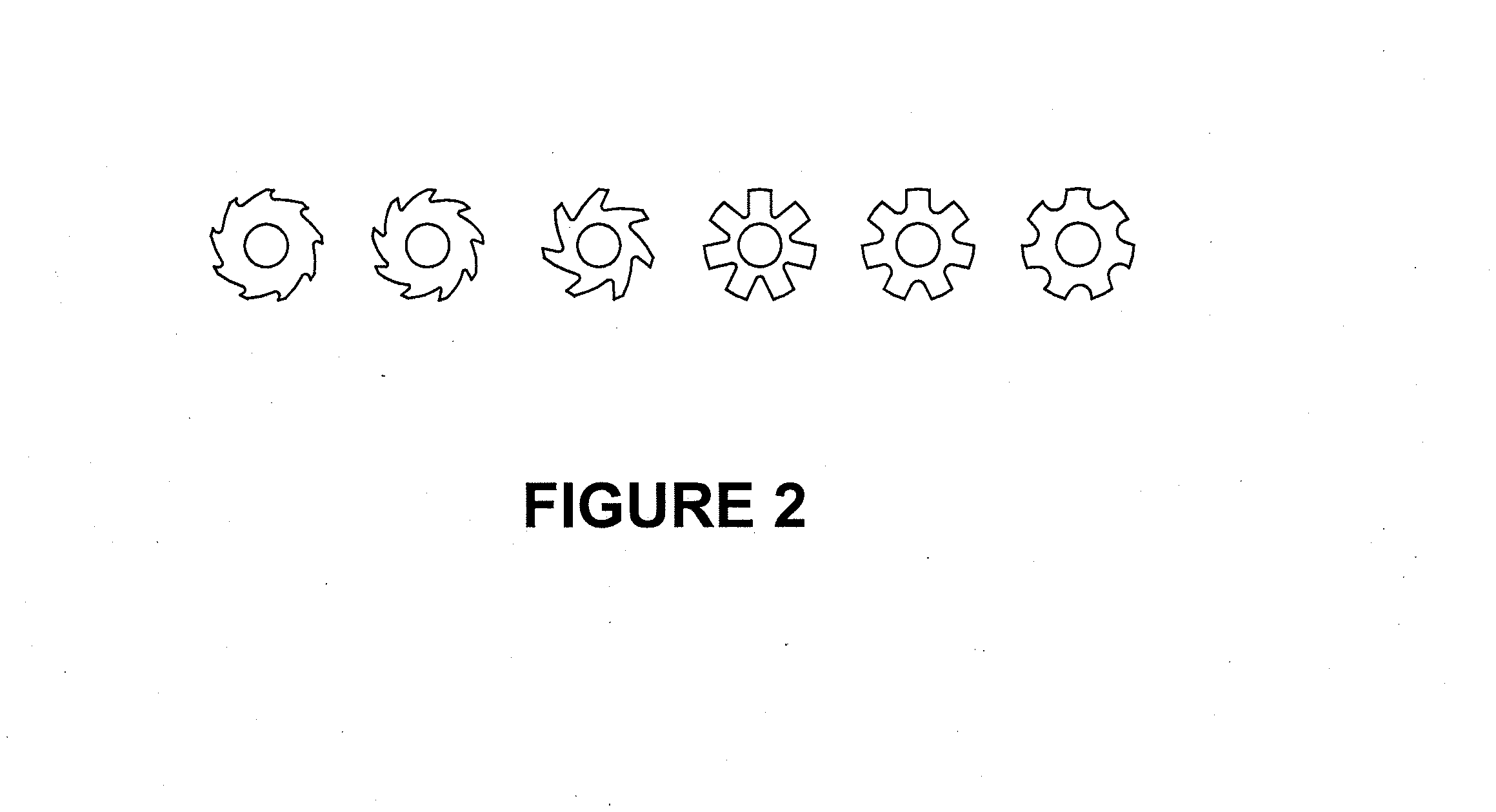Method for heating a feedstock
a feedstock and heat treatment technology, applied in the field of feedstock heating methods, can solve the problems of feedstock overcooking or undercooking in the downstream reactor, difficult heat of the plug formed, uneven temperature distribution, etc., and achieve the effects of reducing equipment erosion, high glucose yield, and reducing erosion
- Summary
- Abstract
- Description
- Claims
- Application Information
AI Technical Summary
Benefits of technology
Problems solved by technology
Method used
Image
Examples
example 1
Determination of the Undissolved Solids Concentration in a Lignocellulosic Feedstock Slurry
[0118]The determination of the undissolved dry solids (UDS) content in a slurry is carried out as follows.
[0119]A fixed amount of slurry is dispensed into a plastic weigh dish and the slurry weight is recorded accurately using an analytical scale. A 1.6 μm filter paper circle, appropriately sized for a Buchner funnel, is placed in an aluminum weighing tin and the combined weight of the tin and filter paper is recorded. After transferring the pre-weighed filter paper to the Buchner funnel, the pre-weighed slurry is passed through the filter paper to isolate the solids. Small volumes of de-ionized water are used to ensure that the solids are quantitatively transferred from the weigh dish to the Buchner funnel. The solids are then washed using excess deionized water, after which the washed sample and filter paper are transferred into the pre-weighed aluminum tin. Care should be taken to ensure th...
example 2
Determination of the Ash Content of a Lignocellulosic Feedstock
[0120]The amount of ash is expressed as the percentage of residue remaining after dry oxidation at 575° C. in accordance with NREL Technical Report NREL / TP-510-42622, January 2008, which is incorporated herein by reference. The results are reported relative to a 105° C. oven dried sample (dried overnight).
[0121]In order to determine ash the content, a crucible is first heated without any sample in a muffle furnace for 4 hours at 575±25° C., cooled and then weighed. After heating, the crucible is cooled and then dried to constant weight, which is defined as less than a ±3 mg change in the weight of the crucible upon one hour of re-heating the crucible at 575±25° C.
[0122]The sample analyzed is a 105° C. oven dried specimen. The weight of the oven dried sample is recorded after drying at 105° C. overnight in an oven and this weight is referred to as “oven dried weight” or “ODW”. The dried, weighed sample is placed in the cr...
example 3
Feedstock Dewatering, Plug Formation, Plug Disintegration and Pretreatment System
[0123]The following describes a system for producing a pretreated feedstock in accordance with embodiments of the invention.
[0124]With reference to FIG. 1, a slurry of lignocellulosic feedstock having a consistency of about 1% to about 10% (w / w), preferably about 3% to about 5% (w / w) in slurry line 102 is pumped by means of pump 104 through in-feed line 106 into pressurized dewatering screw press indicated by general reference number 108. Pressurized dewatering screw press 108 comprises a solid shell 105 having a feedstock inlet port 112 and a pressate port 114. In-feed line 106 feeds lignocellulosic feedstock into the dewatering screw press 108 through the feedstock inlet port 112 at a pressure of, e.g., about 70 psia to about 900 psia. The pressure may be determined by measuring the pressure with a pressure sensor located at feedstock inlet port 112.
[0125]A screen 116 is disposed within shell 105 to p...
PUM
| Property | Measurement | Unit |
|---|---|---|
| speed | aaaaa | aaaaa |
| speed | aaaaa | aaaaa |
| temperature | aaaaa | aaaaa |
Abstract
Description
Claims
Application Information
 Login to View More
Login to View More - R&D
- Intellectual Property
- Life Sciences
- Materials
- Tech Scout
- Unparalleled Data Quality
- Higher Quality Content
- 60% Fewer Hallucinations
Browse by: Latest US Patents, China's latest patents, Technical Efficacy Thesaurus, Application Domain, Technology Topic, Popular Technical Reports.
© 2025 PatSnap. All rights reserved.Legal|Privacy policy|Modern Slavery Act Transparency Statement|Sitemap|About US| Contact US: help@patsnap.com



